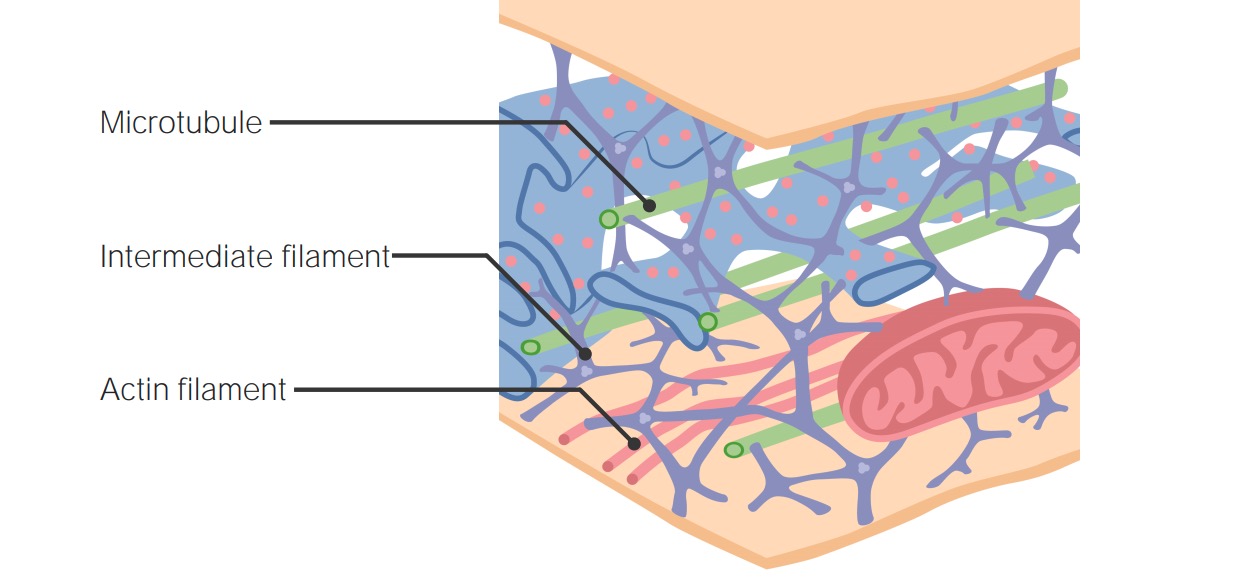Playlist
Show Playlist
Hide Playlist
Extracellular & Intracellular Signaling: Receptor Modifications
-
Slides 03 IntracellularExtracellularSignaling GeneralPhysiology.pdf
-
Download Lecture Overview
00:01 How do you control the magnitude of a response? Because in cell-to-cell signaling, you have one cell releasing a packet or a quanta of information then it travels to another spot to signal it. 00:19 But the cell does have, the target cell has a way to respond. 00:24 The way it responds is based upon the number of receptors that it has. 00:31 How can that cell modulate the number of receptors that it has? There can be a down regulation of receptors and there can be up regulation of receptors a very easy way to modify the target effect. 00:46 Sometimes if you have signals that are too high for too long, you might down regulate the receptor response of this. 00:53 Other times there might be a clinical condition in which that you have up regulated the number of receptors and therefore you're hyperresponsive to a certain signal. 01:04 Another way to modulate the receptor cell signaling interactions is by having a certain set of receptors internalized within the cell. 01:15 This is a handy way to quickly adjust the number of receptors that are expressed. 01:23 With up regulation and down regulation, it involves making new receptors or pulling them off the membrane. 01:30 That takes time. 01:32 If you simply had a group of internalized receptors, in certain conditions, you could have them expressed on the cell surface. 01:42 And once they're expressed on the cell surface, you would be able to increase that signal that's being sent to the cell. 01:50 A final way to adjust the sensitivity of a particular response to a quanta or amount of signaling molecule is by something called sensitization or desensitization and this is exactly how it sounds. 02:05 You have a similar number of receptors but you make them less responsive to the ligand that's coming. 02:14 This could be done in a number of ways. 02:17 You could have that particular receptor not transduce the signal in as well or maybe you have less secondary messenger signals that are sent or less protein phosphorylation that occurs in response to the binding of the ligand. 02:34 The opposite could happen in where you bind to a particular receptor and that response is up regulated and is exaggerated than you would have in a normal condition. 02:45 That exaggerated response then allows for that signal to be amplified. 02:53 So sensitization and desensitization are very important aspects along with up regulation and down regulation to respond to signals that have been placed for long periods of time. 03:06 The internalization and externalization of receptors are usually certain target tissues kind of strategy to deal with the types of signals they're getting. 03:18 While the up regulation and down regulation, desensitization and sensitization are ones that which you can control to a little greater extent.
About the Lecture
The lecture Extracellular & Intracellular Signaling: Receptor Modifications by Thad Wilson, PhD is from the course Membrane Physiology.
Included Quiz Questions
Which of the following best describes a group of receptors that have not changed number but rather have attenuated transduction?
- Desensitization
- Downregulation
- Internalization
- Sensitization
- Externalization
How does a cell modulate the magnitude of the response to a signal?
- By manipulation of the status of its membrane receptors
- By changing the cell membrane
- By blocking some receptors located on the cell membrane
- By decreasing the amount of receptors manufactured at any given moment
- By increasing the amount of receptors manufactured at any given moment
How does a cell quickly decrease or increase the number of receptors on its membrane?
- By internalization or externalization
- By sensitization
- By desensitization
- By downregulation
- By upregulation
How can a cell develop desensitization?
- By allowing fewer secondary signals or less protein phosphorylation
- By decreasing the number of surface receptors to one or two
- By blocking some receptors
- By breaking down some receptors
- By clipping off some receptors and throwing them into the extracellular matrix
What is sensitization?
- An exaggerated response that allows for amplification of the signal
- A diminished response to a stimulus
- A repeated connection between the stimulus and the receptor
- A permanent modification of the receptor that keeps it constantly activated
- A modification of the cell membrane that does not let go of the receptors present within it
Which receptor manipulation takes time because it requires manufacturing new receptors?
- Upregulation
- Sensitization
- Downregulation
- Externalization
- Internalization
Customer reviews
5,0 of 5 stars
| 5 Stars |
|
5 |
| 4 Stars |
|
0 |
| 3 Stars |
|
0 |
| 2 Stars |
|
0 |
| 1 Star |
|
0 |




